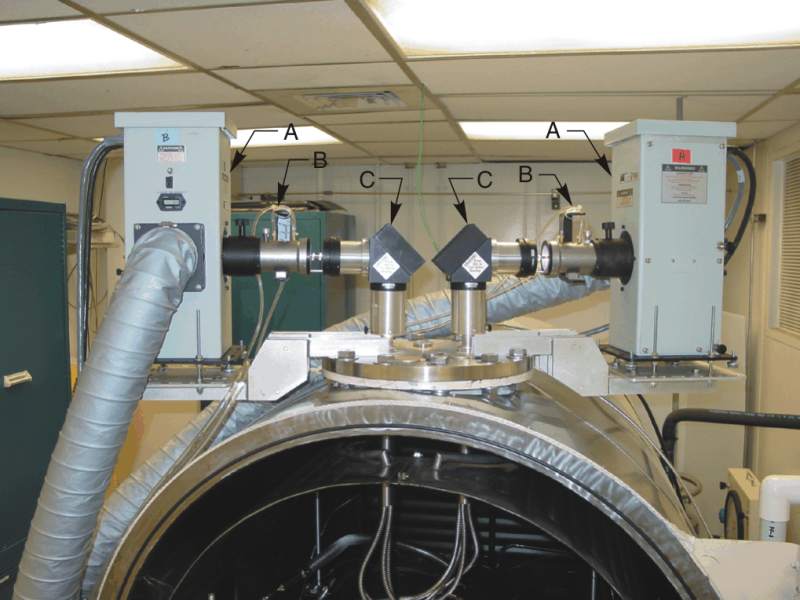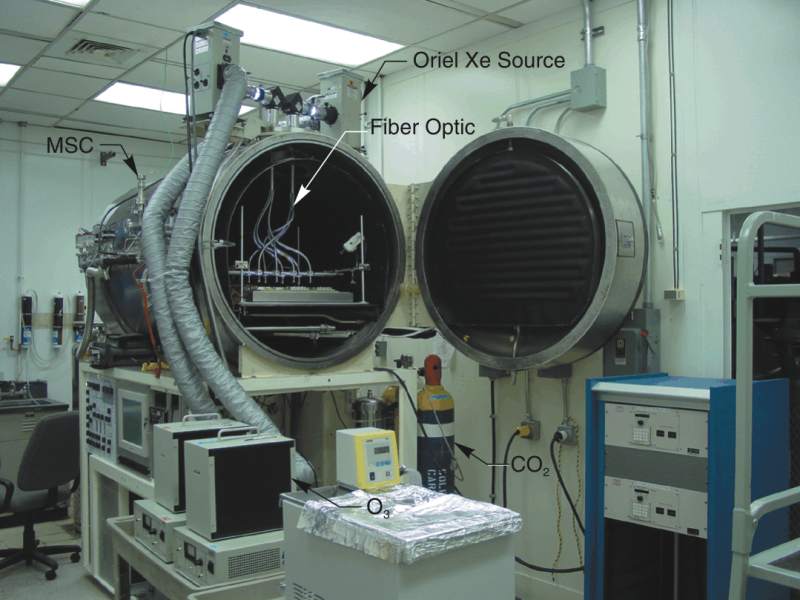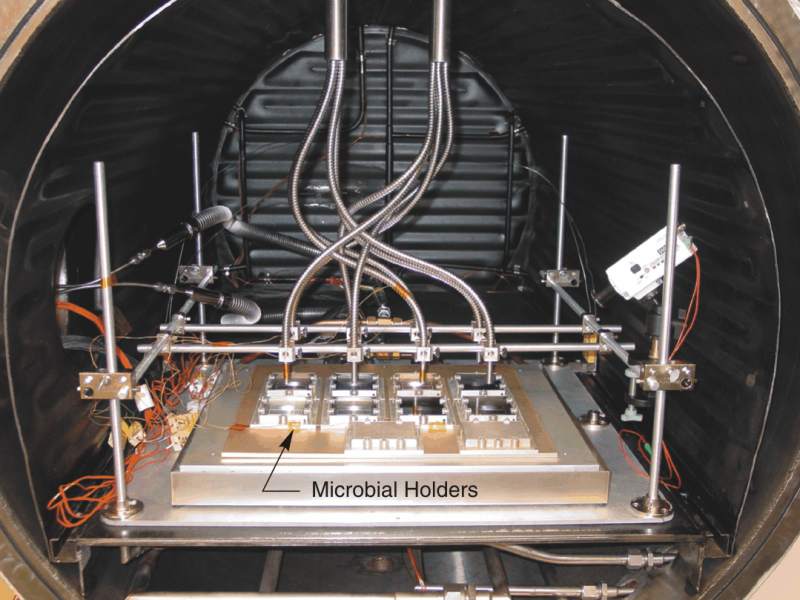Light Sources in Mars Simulation Chamber
Light Sources in Mars Simulation Chamber
Oriel® Light Sources in Mars Simulation Chamber
Scientists at the Kennedy Space Center, FL used Oriel® Light Sources in their Mars Simulation Chamber (MSC). The MSC was designed to accurately maintain the pressure (7 mb). temperature (-100 to +30 0C), atmospheric composition (pure CO2), and UV irradiation experienced at the Mars equator, under clear-sky conditions.1
Two Oriel 450 W Xenon Arc Lamp Systems delivered a simulated Mars environment to samples within the MSC via fiber optic cables, as shown in these figures.

The Experiment
The output from the Oriel® Sources first passed through 60 mm long Oriel Water Filters to remove the high-intensity mid-infrared (MIR) radiation; 1200 to 2500 nm radiation was attenuated. The reduction in MIR was required in order to prevent IR damage to the UV-transmitting fiber-optic bundles.

The attenuated radiation was then reflected off of an Oriel 90° Beam-turning Assembly, and focused onto the tops of two MSC bulkhead fittings. Each bulkhead fitting was configured with a 12.5 mm core UV-transmitting fiber optic bundle, which transmitted the simulated Mars spectrum across the pressure differential of the MSC. All optical elements in the Oriel Illumination Systems were fabricated from highly purified fused silica, to ensure UV transmittance down to 200 nm. Within the MSC, precisely aligned fiber-optic assemblies were used to deliver the simulated Mars-normal light spectrum onto biological specimens maintained within microbial holders.

- Schuerger, A.C., Mancinelli, R.L., Kern, R.G., Rothschild, L.J., and McKay, C.P. 2003. Survival of endospores of Bacillus subtilis on spacecraft surfaces under simulated Martian environments: Implications for the forward contamination of Mars. Icarus 165:253-276.